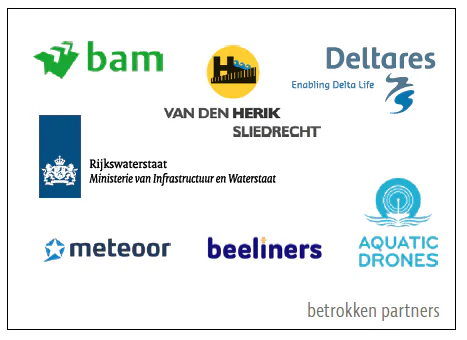
Contractor combination BAM/Van den Herik, Deltares and Rijkswaterstaat are working together as an innovation team on an equal footing and in joint ownership to develop the flexible cibs with Xstream blocks.
Characteristics of the cribs
The flexible cib is constructed from Xstream blocks. This is a modular and adaptive system. The principle of the Xstream block is as follows: the blocks are poured, hook into each other and form a solid structure. Anchoring is not required and the blocks can be picked up, making it easy to extend or raise the crib.
A groyne with Xstream blocks becomes partially permeable. Approximately 60% is open space allowing water and sediment to flow between the blocks without the groyne losing its function. This positively influences river flow and sediment dynamics around the groyne. Furthermore, the open spaces between the Xstream blocks are good habitat for various organisms.
Soil erosion as a task
Current river cribs involve the following issues:
- Stability of cribs are adversely affected by soil erosion.
- Water level reduction and impact on groundwater levels due to soil erosion.
- More impoundment due to higher cribs during extreme river discharge.
- River discharge increases due to climate change, current cribs are not adaptive to discharge capacity.
- Larger barges cause more damage to cribs and banks due to waves.
- Local deep excavation pits occur that can affect the fairway.
- Collision damage is not easy to repair now and repair causes inconvenience.

Collaboration
For the further development of the flexible crib, a partnership was established within the Learning Space for the different phases. Each partner involved, appropriate to their own interests, made contributions in money, resources and/or hours.
Beeliner’s contribution
Within the flexible crib project, Beeliners is responsible for monitoring the crib. For this purpose we have made a number of Xstream blocks “smart” in an innovative way.
By applying gyroscopes, impact and temperature sensors in the Xstream blocks, we can accurately determine the impact on the flexible crib under the influence of external factors. At high water levels, the blocks can transmit data underwater. In addition to the electronics, Beeliners was also responsible for the construction to install the sensors in the blocks.
Measurements are made in real time and data is sent to a clear dashboard where impact or shifts are immediately recorded by visualization. This way damage to the crib by external factors is immediately visible.
A project in which Beeliners was responsible for a total solution. Hardware, software, cloud solution, dashboard, construction. The realization took place within four months. A great achievement in collaboration with our partners BAM, van den Herik, Deltaris and Rijkswaterstaat.


